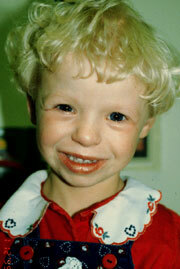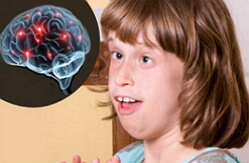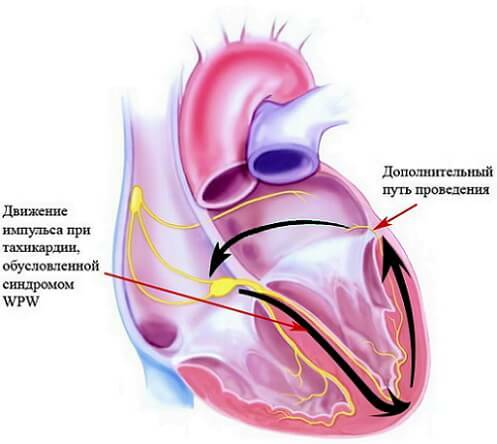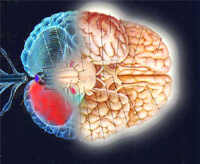Williams Syndrome
 Williams Syndrome is a fairly rare congenital genetic disease, manifested as a violation in mental development and characteristic for this disease appearance. It is thanks to a specific appearance that this syndrome is also known as the elf face syndrome( with a flat, blunt nose end, a large mouth, drooping swollen eyelids, a wide forehead, a peculiar cut of the eyes).
Williams Syndrome is a fairly rare congenital genetic disease, manifested as a violation in mental development and characteristic for this disease appearance. It is thanks to a specific appearance that this syndrome is also known as the elf face syndrome( with a flat, blunt nose end, a large mouth, drooping swollen eyelids, a wide forehead, a peculiar cut of the eyes).
The causes of Williams syndrome are not fully established. It is believed that there is a hereditary predisposition to this syndrome, manifested with adverse effects of various environmental factors. The hereditary nature of this pathology is confirmed by the same symptomatology in identical twins. Chromosomal recruitment in children with Williams syndrome is normal in most cases.
The most characteristic sign of Williams syndrome is a rather unusual structure of the face, which is manifested by the following signs: a special incision of the eyes, a very wide forehead, the color of the iris of the eye is bright blue( eyeballs may have the same shade), large mouth, Fleshy cheeks full, swollen eyelids, small slightly pointed chin. All of the above symptoms are not always present in full, but with even two of them, you can put a clear diagnosis - Williams syndrome.
Children with this syndrome not only have mental retardation, but also serious physical ailments - clubfoot or flat feet, heart disease( aortic stenosis), various musculoskeletal disorders, increased joint elasticity. Quite often these children have an incorrect formation of the occlusion( the teeth of the babies are cut very late);Teeth irregularly shaped, rare, often affected by tooth decay. During the first two years of life, children are very weak: they eat badly, are constantly thirsty, suffer frequent vomiting and constipation, which are replaced by diarrhea. Over the years, a narrow chest, an elongated neck, and a low waist fit join the distinctive appearance symptoms. Such children in the first years of life significantly lag behind in growth and weight, and on the contrary, growing up, begin to gain excess weight. Often, the external symptoms are combined with various metabolic disorders( there is an increase in the content of cholesterol and calcium in the blood).
Patients with this syndrome have problems with mathematics, writing, reading( their IQ is about 60).However, despite this, they have a fairly well developed oral speech, and it is very expressive, emotional and sometimes even poetic. In addition, such people have significant musical talent. They can not concentrate their attention on many things, however, they can play with musical instruments, listen to music or sing, with enviable persistence. The vast majority do not know how to read music, while possessing almost absolute hearing, wonderful musical memory and an exceptional sense of rhythm. People with this syndrome are more friendly, but they may suffer from increased anxiety.
The lifespan of patients with Williams syndrome is slightly less than in ordinary people, which many specialists associate with an elevated level of calcium in the blood, which causes early calcification of the heart muscle and arteries. In 75% of patients directly above the heart there is a narrowing of the aorta, which in some cases requires mandatory surgical intervention. In connection with a rather high risk of cardiovascular disease, such patients are recommended annual preventive examinations.
Despite the fact that with age, a child with Williams syndrome lags behind in development from his peers, his complaisant temper, listening skills and natural sociability give a favorable prognosis for a possible improvement in the state of the psyche. When teaching such a special child, adults need to take into account excessive laughability, spontaneity in actions and a raised - foolish mood. All classes should take place in a quiet environment, and from the room you need to remove all extraneous and distracting. Communication of children with Williams syndrome with their healthy peers plays a very great role in their further favorable development.



